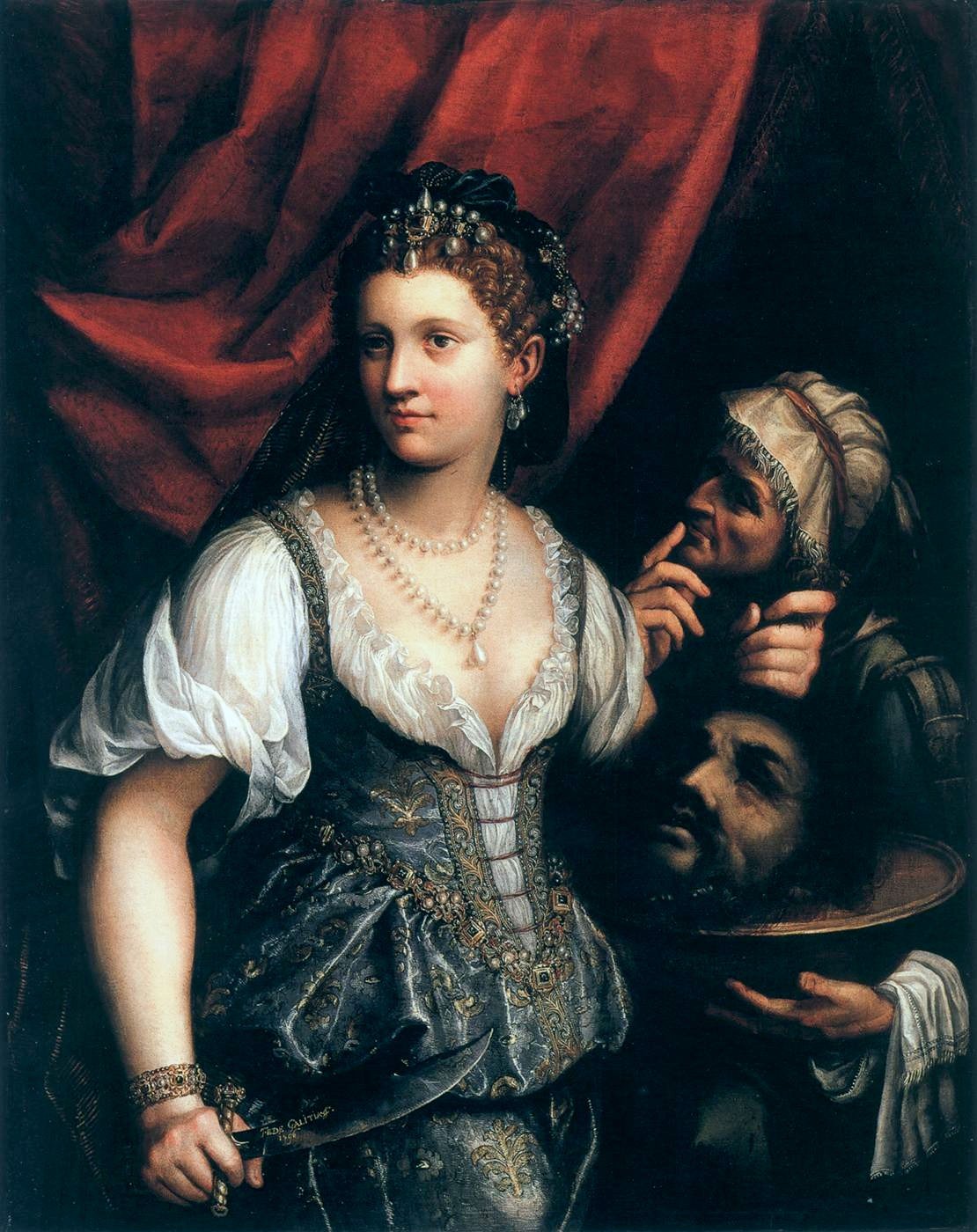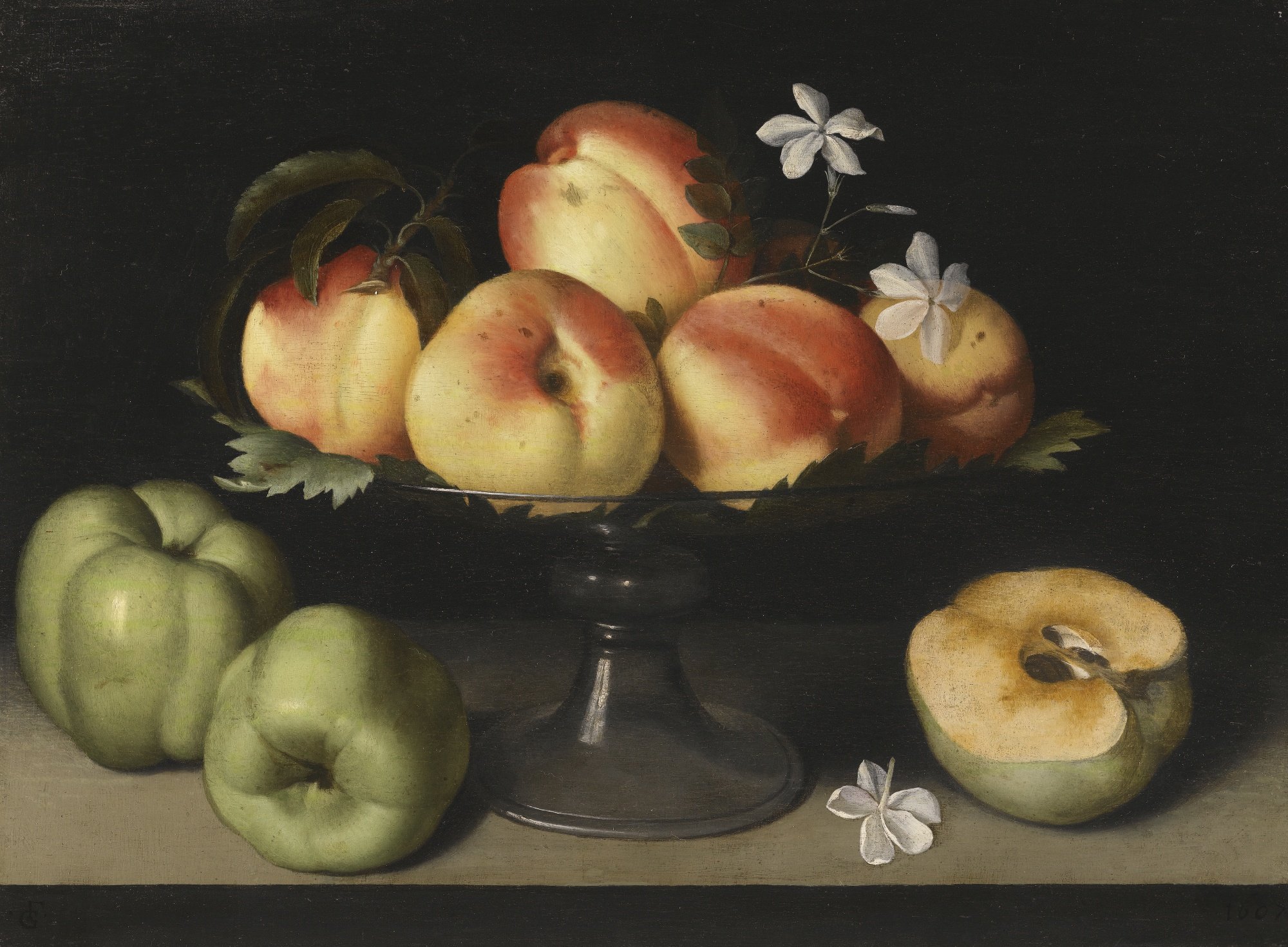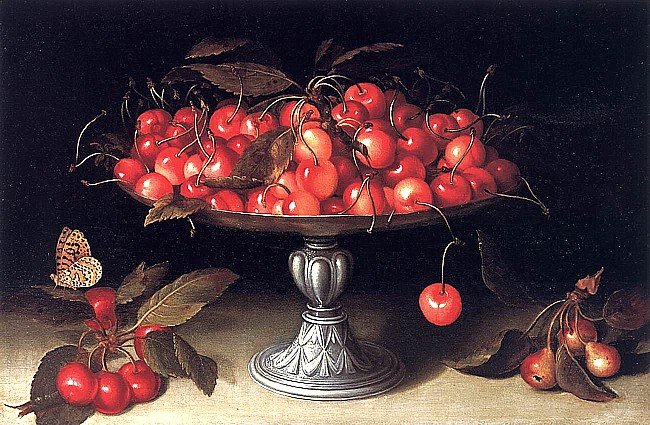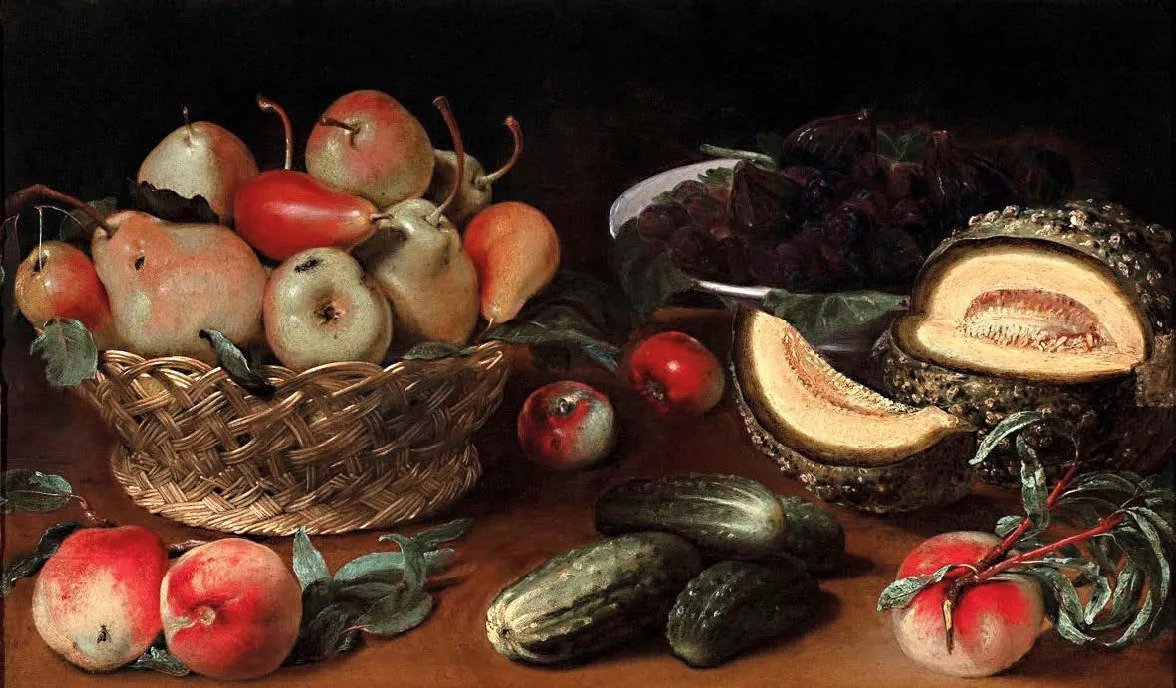Episode #101: Bits of "Breaking Barriers": Fede Galizia (Season 12, Episode 2)
For this season of ArtCurious, I’m doing something a little bit different. I’m treating you to renditions of eight of my favorite segments from Breaking Barriers: Women Artists of Renaissance Europe, my online course found exclusively at avid.fm. Every other week through January, I’ll share selections from Breaking Barriers, and encourage you that if you like it, you can purchase the whole course. Today: She might not have had the backing of royal patrons or the fancy aristocratic connections that Levina Teerlinc and Sofonisba Anguissola had, but Fede Galizia still did well for herself with commissions. And she was an innovator, to boot, often noted as the first-known Italian artist to have completed a still life painting at a time where the genre was not yet fashionable. From Breaking Barriers: Women of Renaissance Europe, please enjoy “Fede Galizia: Early Still-Life Adopter.”
Please SUBSCRIBE and REVIEW our show on Apple Podcasts and FOLLOW on Spotify
SPONSORS:
Betterhelp: Get 10% off your first month of counseling. ArtCurious Podcast is sponsored by BetterHelp. This episode is sponsored by/brought to you by BetterHelp. Give online therapy a try at betterhelp.com/artcurious and get on your way to being your best self.
Indeed: only pay for quality applications from resumes in Indeed’s database matching your job description.
The Barnes Foundation: For a limited time, get 10% off your first Barnes Class when you visit our link
Want to advertise/sponsor our show?
We have partnered with AdvertiseCast to handle our advertising/sponsorship requests. They’re great to work with and will help you advertise on our show. Please email sales@advertisecast.com or click the link below to get started.
https://www.advertisecast.com/ArtCuriousPodcast
Episode Credits:
Production and Editing by Kaboonki. Theme music by Alex Davis. Logo by Dave Rainey. Additional music by Storyblocks.
ArtCurious is sponsored by Anchorlight, an interdisciplinary creative space, founded with the intent of fostering artists, designers, and craftspeople at varying stages of their development. Home to artist studios, residency opportunities, and exhibition space Anchorlight encourages mentorship and the cross-pollination of skills among creatives in the Triangle.
Recommended Reading
Please note that ArtCurious is a participant in the Bookshop.org Affiliate Program, an affiliate advertising program designed to provide a means for sites to earn advertising fees by advertising and linking to bookshop.org. This is all done at no cost to you, and serves as a means to help our show and independent bookstores. Click on the list below and thank you for your purchases!
Episode Transcript
Hi there, my lovely listeners! Welcome back to the ArtCurious podcast, where we explore the unexpected, slightly odd, and strangely wonderful in art history. If you’ve listened to our last episode, you’ll know that this season of the podcast is different. Instead of our usual spate of new episodes, I’m taking a little time off to research a new book--yay!-- so I’m sharing some slightly zhug-ed renditions of eight of my favorite segments from my audio course, “Breaking Barriers: Women Artists of Renaissance Europe.” Breaking Barriers is a 21-day course, meaning that you get essentially a mini-episode of ArtCurious every day for three weeks straight, and the unique opportunity to learn about some artists that you may have never heard of before--and they are likely to blow your mind, or become your next favorite artist. That’s three weeks, with every day featuring the story of a new Renaissance painter, sculptor, miniature maker-- from Sofonisba Anguissola and Marietta Robusti to lesser-known artists like Plautilla Nelli and Levina Teerlinc, this course will lead you through the lives and careers of groundbreaking women who’ve made their marks on art history. This evergreen course is all about learning for fun, no tests, no papers, no quizzes, just cool content that you can access on your own time so you can learn at your own pace. Register for the course and start learning today at Avid.fm/jennifer. In the meantime, here’s one of my favorite snippets from Breaking Barriers, all about an artist who was totally new to me, and whom I now totally love. Enjoy!
A lot of the big name Renaissance artists, as we mentioned in our very first class, get slimmed down to a single moniker-- and most of the time, we call these artists by their first names, not their surnames. So we’ve got Michelangelo instead of Michelangelo Buonarroti, or Titian instead of Tiziano Veccelo. What’s cool is today’s subject got her own name pared down, too--but in her case, she was referred to in her own time via her last name. Fede Galizia became known during her time simply by the moniker Galizia. And one wonders if this was because it was an easy handle for her to use, or if it was a convenient way of hiding her gender, as many had done before and would continue to do for many years after--just think of the famed French author George Sand, who adopted a male pseudonym instead of publishing under her given name, Amantine Lucile Aurore Dupin. Another theory I have is that the name “Galizia” allowed her an opportunity to work under her father, who was himself an artist. But we’re getting ahead of ourselves a little bit.
Fede Galizia was born in Milan, Italy, to her father Nunzio Galizia, who was a painter of miniatures. We don’t know anything about who her mother was, sadly. And that right there is a problem with many of the female artists from this time period-- we’re lacking a lot of basic information about their lives, because records either don’t survive, or have not yet been found, to indicate pertinent details, such as her mother’s name, or even Fede Galizia’s birthdate. Art historians have thus had to use their best estimates to determine Galizia’s year of birth, which was probably around 1578 or so. As we’ve come to expect of many women who grew up to become esteemed artists, Fede Galizia was most likely introduced to art-making by her father, and while the details of her childhood are, for the most part, absent, we do know that she was considered a child prodigy, being incredibly skilled in painting and grabbing enough attention in Milan that, at the age of 12, a fellow painter and art theorist turned historian, Gian Paolo Lomazzo, began trumpeting her talents, writing, quote, “[T]his girl dedicates herself to imitate the most extraordinary of our art.”
Galizia’s success can be chalked up, first and foremost, to her hard work and talent, but there are two other factors that I don’t want to miss here-- the first is, naturally, that training that her father provided. Second, and related, is that by the time that Galizia was born in the 1570s, the precedent for an accomplished and well-trained female artist had been set and was no longer considered a complete anomaly. Just think of Sofonisba Anguissola, whom we discussed a couple of episodes back. By the 1570s, Sofonisba Anguissola’s career had already been well established, having already made her mark in her native Italy before moving on to the Spanish court. Sofonisba’s hometown of Cremona is only separated from Milan, Galizia’s hometown, by about 50 miles, and even without phones, cars, trains, or the like, news of Sofonisba’s achievements most certainly reached Milan, and it might be assumed that Nuncio, Galizia’s father, was inspired by the Anguissola family’s educational and career goals. All of this may have provided him with extra incentive to train his daughter for an artistic career, and it obviously worked. Before she was scarcely out of her teens, Fede Galizia was already receiving numerous commissions and had garnered an international reputation. At the outset, she truly earned her stripes as a portraitist, and one of the reasons that historians suspect that she was so successful and sought-after was actually due to the fact that she trained with a miniaturist--her father. In creating such tiny pieces, miniaturists, as you might imagine, must be very attentive to detail, making every single swipe of their miniscule paintbrushes a meaningful and important one. So it makes absolute sense to see that Galizia’s works were equally attentive to detail, and that this made all the difference in her works, as well as their acceptance.
Take one of her most acclaimed works, her Judith with the Head of Holofernes, now in the Ringling Museum in Sarasota, Florida. While not as violent and bloodily arresting the way her Roman counterpart, Artemisia Gentileschi’s take, would later be (see ArtCurious Episode #42 for the downlow on that incredible work, Galizia’s image is stunning in its detail. Consider Judith’s diadem-- a pearl-encrusted headdress accompanied by velvety black fabric that drapes down her back, framing her head with her delicately pinned ringlets and her creamy white neck. As a viewer, I almost don’t want to look at anything else-- not even the grotesque gray head of dead Holofernes (maybe especially not the grotesque gray head of Holofernes). Judith, in her fine gems and in a gold and blue brocade dress, is just incredibly beautiful in her lavishness. No wonder Fede Galizia was popular as a portraitist. People wanted that kind of attention to detail for their commissions, and Galizia was more than able to deliver. (And she was so proud of her Judith, by the way, that she signed and dated the work across the blade of Judith’s sword. I’ll post an image of this on my blog post for this episode, which is linked in today’s show notes on your podcast app).
Fede Galizia had no children and was never married, which meant that she was able to devote her whole life to art-- and because of this, she worked in almost every format and doing practically any commission that could be lobbed at a Renaissance artist. Portraits, religious devotional images, small, personal works, and large-scale altarpieces-- you name it, Galizia did it, and did it well. These all have their places in the artist’s oeuvre. But something very interesting happened for Galizia as she grew older and more established: she became far more interested in still life painting than almost anything else.
When we come back, we’ll get to the nuts and bolts of how and why Fede Galizia was introduced to the world of Still Life painting. Thanks for supporting our show by listening to our advertisers today.
Welcome back to ArtCurious.
Now, a brief explainer of the term “still life”, for those of you who are new to the art world. A still life is the term we art historians use to describe a scene that’s basically a showcase of inanimate objects, like a bowl of fruit or a bouquet of flowers. You have most definitely come across one, or thousands, if you’ve ever visited an art museum, especially one which houses art from before the modern era. According to historian Sam Segal, who wrote a pioneering article in The Burlington Magazine on Fede Galizia, sixty-three works had been cataloged or attributed to Galizia by the late 1990s, and forty-four of those works are still life paintings. That’s an incredible number, equaling more than ⅔ of her surviving works. Now, I can practically hear you saying, “so what? Why should I care about some boring paintings of fruit?” But they are actually super fascinating because of what it means for Fede Galizia as an historic painter. But as always, we need a little backstory here.
At the beginning of the Renaissance, there was this almost obsessive, theoretical need to prove that painting was somehow a nobler and greater art form than sculpture, or architecture, and lots of Renaissance think pieces were done to extol its significance. As painting eventually took hold as the number one art form, the need to declare the best kinds of painting took over. This is known as the hierarchy of painting, and it started to become a big deal beginning in the 1600s. At that point, the number one type of painting was what would eventually be termed history painting, a term that would develop to mean not only paintings showing scenes from history, but also religious or mythological scenes. Eventually as art history, as a field, was born and moved into prominence in the 19th century, everything became so codified that painting, from most important to least important genres-- and I’m saying “most and least important” in air quotes here-- would read something like this: history painting at the top, followed then by portraiture, then genre painting (which are essentially little vignettes of daily life), and then rounding out the bottom three were landscapes, animal paintings, and… you guessed it…the humble still life.
For me, this actually explains why Fede Galizia hasn’t received as much attention as other artists from the Renaissance, especially other women, because with so many still lifes making up her known output, many snobby art historians simply snubbed still lifes in general--and thus, snubbed their artists, like Galicia, alongside them.
In reality, still life wasn’t really a thing all that much in Italy during the Renaissance. And yet Fede Galizia painted them over and over again, with works like A Crystal Fruit Stand with Peaches, Quinces, and Jasmine Flowers, from 1607 and today held in a private collection, is so enticing that it’s hard not to want to reach out and just grab a peach, and you can practically smell the heavenly scent emanating from the flowers. It’s a small work, only a little bigger than about 12 by 16 inches, so the fruit is about life-size, with details so believable--just go to my blog and check out the gentle sheen of reflected life gleaming off of that crystal fruit stand. It’s stunning. But this image begs me to question: how did she get interested in a genre of painting that was basically considered uncool--or at least not yet popular--in Italy?
There might have been a very specific person that brought this to Galizia’s attention. Beginning around 1595 or 1600--sources vary on this one-- the Flemish painter Jan Breughel the Elder--not to be confused with his dad, Peter Breughel the Elder--relocated to Milan to continue painting for his patron, Cardinal Federico Borromeo, who had become archbishop of Milan that year. Breughel was known for painting these incredibly lush floral still lifes, though, like Galizia, he also painted a lot of other types of work, too. In Northern Europe--Flanders, where Breughel was based, as well as the neighboring country of Holland, our modern-day Netherlands--there had been this move away toward religious and mythological themes in art, with a preference instead to those genre scenes that I mentioned previously, and paintings of everyday objects, like flowers. Like bowls of fruit. In Northern Europe, that was all the rage, and Breughel, upon his move to Milan, brought that trend with him. And with Breughel in town, it’s almost certain that Galizia was able to study his works close at hand--or at least to learn all about his amazing pieces and their subject matter.
It had a career-changing effect on Galizia-- so much so that one of her earliest still life paintings, from 1602, has been called the first known signed-and-dated still life by an Italian artist. For a quick comparison, Caravaggio, the bad boy of Roman Baroque painting, made his first major still life, a painting titled Basket of Fruit, around the year 1600--but he didn’t date the work. So though Caravaggio--himself also having been under the influence of Breughel, may have technically done it first, it was Galizia who put an actual, verifiable date on the art historical calendar. She was, in actuality, a pioneer of still life painting in Italy long before everyone else decided to give it a try.
There’s another reason why Fede Galizia may have gravitated toward still life painting, as women would, and in some ways, still do-- there’s a vast precedence toward still life as a popular subject for women because-- well, it’s easy to access materials for them, for the most part. Think especially of Galizia’s earliest still lifes, like the Crystal Fruit Stand mentioned previously, or Cherries in a Silver Compote, from 1610 and also in a private collection today. They feature fruit or flowers, both easily gotten in local markets, or even obliging fields or orchards. Artists don’t have to hire models to do still lives, and women artists don’t have to go to locations that might be seen as untoward or problematic. They didn’t face stereotyping or brusque rejection for taking on lofty religious and historical subjects, which were often seen as the purview of male painters. Still life painting allowed women to experiment and explore--to try on new styles, formats, and, like Galizia, subject matter, all from the privacy of their own homes or studios. Still life allowed them freedom. For Galizia in particular, it was also a prime showcase for her to display her ability to create a balanced, beautiful, and sometimes lavish composition, which would have made her works highly prized by collectors. Even more so, it allowed her the time and space to develop her immense skills of light modeling and shading, as well as her depth of knowledge of the latest innovations and scientific discoveries in optics. Galizia was a tastemaker and her works, fascinatingly, act as precursors to later modernist icons who adopted still life painting as their own, such as the French post-Impressionist Paul Cézanne and the Italian painter Giorgio Morandi.
Just as we don’t know exactly when Fede Galizia was born, we also don’t know exactly when Fede Galizia died. She probably passed away in 1630 around the age of 60, because she drafted her will in June of that year, when Italy was under the ravages of the plague, and it is assumed that it was indeed the plague that eventually ended her life. That, and the dismissal of still life painting and of women as artists in particular, means that Galizia had, for the longest time, fallen by the wayside; a forgotten figure in art history. Painting subjects and styles fall out of fashion all the time-- and artists, sadly, do too. But in 2019, something wonderful occurred. One of Fede Galizia’s paintings--a still life of peaches and jasmine, and featuring a beguiling little grasshopper in the corner-- was sold at Sotheby’s as part of a sale of works by women for a total of over $2 million-- not small change for an artist whose name is not widely known. And just this year, 2022, a recently rediscovered, undated work titled Still life with apples, pears, figs and melon went on sale as part of an exhibition of still lifes by women at Colnaghi Galleries in London. In art as in life, attention follows the money, so I’d put my dollars down that we’ll be seeing and hearing much more about the life and work of Fede Galizia in the future. Fingers crossed!
I so appreciate you taking the time to listen to ArtCurious today-- thank you so much, and I hope you enjoyed learning about Fede Galizia-- she has become someone whom I’ve loved learning about, to be sure. As I mentioned at the top of the show, it would mean a whole lot to me if you would register for my course, Breaking Barriers: Women Artists of Renaissance Europe. It’s on sale right now, 21 days, learn on your own time and at your own pace, and it’s fun--I promise. No quizzes or grades, either, just learning for the sake of good old fashioned learning! Please register now at avid.fm/jennifer, and not only will you get the entire 21 day course, but you’ll also receive a PDF with every episode featuring the images discussed and a recommended reading list. So again, that’s Breaking Barriers: Women Artists of Renaissance Europe, available now at avid.fm/jennifer.
I’ll be back with you again in two weeks to share another story from Breaking Barriers. Thank you, again, for supporting me while I research my next project--you are awesome. Remember that we’ve got exclusive video content coming at you over on YouTube. So check us out there-the link is in the show notes on your handy-dandy podcast app right now. Stick with me, and stay curious!










